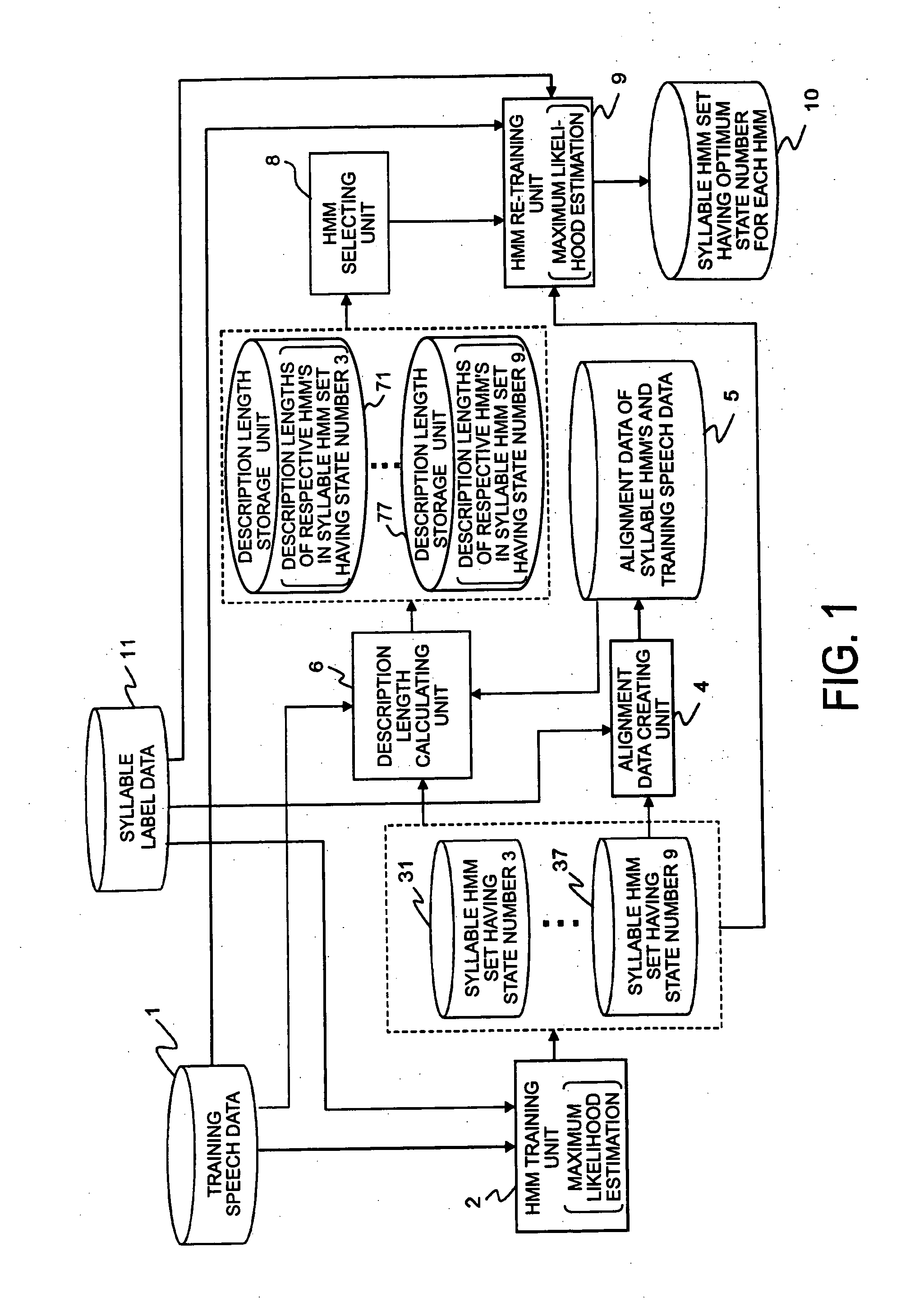Acoustic model creating method, acoustic model creating apparatus, acoustic model creating program, and speech recognition apparatus
a technology of acoustic model and creating method, which is applied in the field of acoustic model creating program, and acoustic model creating method, which can solve the problems of increasing the time needed for recognition, increasing the complexity of recognition algorithm, and increasing the number of parameters in respective syllable hmm's, so as to improve the recognition ability and enhance the recognition ability. the effect of increasing the number of parameters and improving the recognition algorithm
- Summary
- Abstract
- Description
- Claims
- Application Information
AI Technical Summary
Benefits of technology
Problems solved by technology
Method used
Image
Examples
first exemplary embodiment
[0064] A first exemplary embodiment will describe an example case where the state numbers of syllable HMM's corresponding to respective syllables (herein, 124 syllables) are to be optimized.
[0065] The flow of overall processing in the first exemplary embodiment will be described briefly with reference to FIG. 1 through FIG. 8.
[0066] Initially, syllable HMM sets are formed, in which the number of states (states having self loops) that together form individual syllable HMM's corresponding to 124 syllables (the state number) is set from a given value to the maximum state number. In this instance, the distribution number in each state can be an arbitrary value; however, 64 is given as the distribution number in the first exemplary embodiment. Also, the lower limit value of the state number (the minimum state number) is 1 and the upper limit value (the maximum state number) is an arbitrary value; however, seven kinds of state numbers, including the state number 3, the state number 4, ....
second exemplary embodiment
[0146] A second exemplary embodiment is to construct, in syllable HMM's having the same consonant or the same vowel, syllable HMM's that tie initial states or final states among plural states (states having self loops) forming these syllable HMM's. The state tying is performed after the processing described in the first exemplary embodiment, that is, the processing to optimize each state number of respective syllable HMM's. The description will be given with reference to FIG. 15.
[0147] Herein, consideration is given to syllable HMM's having the same consonant or the same vowel, for example, syllable HMM's of a syllable / ki / , syllable HMM's of a syllable / ka / , syllable HMM's of a syllable is / a / , and syllable HMM's of a syllable / a / are concerned. To be more specific, a syllable / ki / and a syllable / ka / both have a consonant / k / , and a syllable / ka / , a syllable is / sa / , and a syllable / a / all have a vowel / a / . In this case, assume that, as the result of optimization of the state num...
PUM
 Login to View More
Login to View More Abstract
Description
Claims
Application Information
 Login to View More
Login to View More - R&D
- Intellectual Property
- Life Sciences
- Materials
- Tech Scout
- Unparalleled Data Quality
- Higher Quality Content
- 60% Fewer Hallucinations
Browse by: Latest US Patents, China's latest patents, Technical Efficacy Thesaurus, Application Domain, Technology Topic, Popular Technical Reports.
© 2025 PatSnap. All rights reserved.Legal|Privacy policy|Modern Slavery Act Transparency Statement|Sitemap|About US| Contact US: help@patsnap.com



